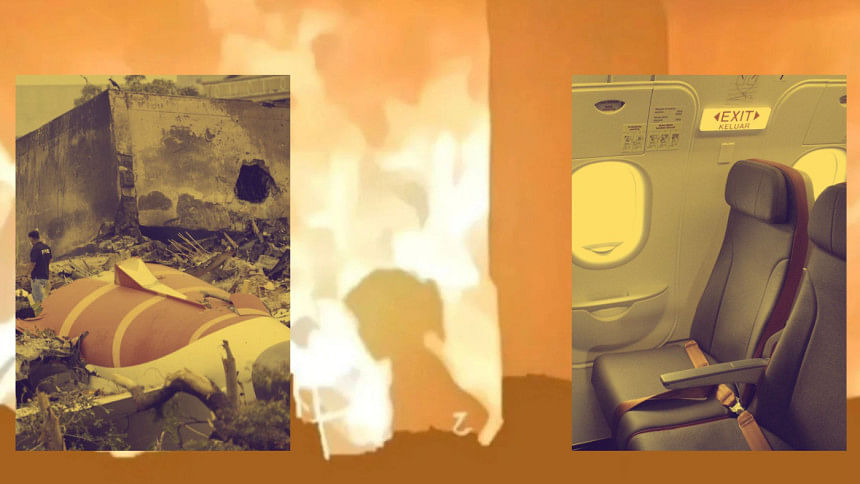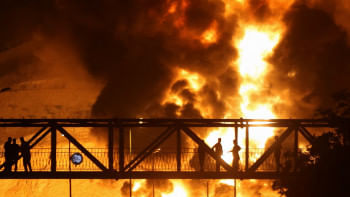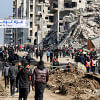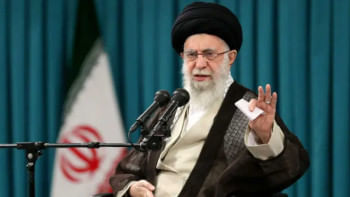The miracle seat and the girl who burned

The Boeing 787 shudders, a great beast awakening. Outside, the tarmac blurs into liquid mercury. You're strapped into seat 11A. Maybe you chose it for the legroom, the quick exit, or the view over the wing. Or perhaps fate, in the form of an overbooked flight or a last-minute upgrade, deposited you here. Right now, it's just another seat. But imagine, just for a moment, the headlines weeks later: "Sole Survivor of Flight 470 Found in 11A." Suddenly, this unremarkable patch of nylon and plastic transcends its function. It becomes a modern-day relic, a shrine to improbable grace. 11A. The miracle seat.
Air travel, we're relentlessly reminded, is the safest way to traverse the planet. Statisticians wield probabilities like shields: one fatal accident per several million departures. The drive to the airport? Infinitely more perilous. We nod, absorbing the data, finding comfort in the cold calculus of risk management. Yet, deep in the lizard brain, where logic dissolves into primal soup, another truth simmers. When you're suspended six miles above the indifferent ocean, cocooned in a pressurised tube hurtling through a freezing void at 500 miles per hour, those statistics feel like tissue paper against a hurricane. It's not about knowing the odds. It's about feeling the terrifying fragility of it all. We are, quite literally, defying gravity on borrowed time. The universe, in its vast, silent machinery, doesn't plot our course. It spins its celestial wheels, oblivious. Destiny isn't written in the stars. It's a chaotic collision of mechanics, weather, human error, and pure, dumb luck.
And this is why the "miracle survivor" story grips us. It's not just empathy, though that's the spark. It's the shattering of the statistics. It's the defiance of the inevitable. We see ourselves in that crumpled seat, emerging from twisted metal and fire. It's the ultimate "what if?" played out in horrifying, glorious detail. The survivor becomes Orpheus, stumbling back from the underworld with a tale we desperately need to hear. Their survival is a flickering candle held against the overwhelming darkness of our own mortality. It whispers: "See? The universe isn't always cruel. Sometimes, against all reason, it spares one." It offers a narrative where chaos yields, however briefly, to a sliver of order, of meaning.
But here's the dissonance that scrapes against the soul like a rusty blade: why doesn't the image of a Palestinian girl burning sear itself into our collective consciousness with the same white-hot intensity? Why doesn't her name—if we even know it—become synonymous with horror, her photograph a universal totem of suffering demanding action? If empathy is the engine, why does it sputter and stall before certain thresholds?
We see the picture. Maybe we flinch. Maybe we share it with a caption dripping in outrage. But the wave of collective, sustained fascination, the media's rapturous dissection, the transformation of her suffering into a global parable of miraculous endurance? It rarely happens. Her agony becomes another pixel in the relentless, numbing scroll of atrocity.
Is it evolutionary psychology? Perhaps. Our ancient wiring prioritises the immediate, the singular threat we can potentially flee or fight. A plane crash is a discrete, catastrophic event, a dragon we can visualise. The slow, grinding violence of occupation, the systemic erasure of a people—that's a fog, diffuse and complex. It lacks the clean narrative arc of disaster and survival. Our empathy circuits, tuned for the lion chasing the single antelope, struggle to process the anthill being systematically flooded.
But evolution isn't destiny, and wiring can be rewired. The deeper fracture, perhaps, lies in the stories we are sold, and the stories we choose to buy. The miracle survivor fits a pre-existing, deeply comforting script: the triumph of the individual against impossible odds. It's Robinson Crusoe on a desert island of wreckage. It's Katniss Everdeen emerging from the arena. It's Luke Skywalker blowing up the Death Star. It reinforces the myth of the rugged individual, blessed by fortune or grit. We can project ourselves onto that lone figure in seat 11A and imagine we too could be so chosen, so resilient.
The burning girl, however, represents a different story—one we find infinitely harder to confront. It's a story of collective punishment, of historical injustice, of power asymmetries so vast they crush the human spirit. It's not an event. It's a condition. Her suffering isn't a fluke of physics. It's the predictable outcome of political choices, ancient hatreds, and global indifference. Accepting her pain fully means accepting our complicity, however passive, in systems that perpetuate such agony. It means acknowledging that the universe's indifference is often amplified by human cruelty. That's a narrative that offers no easy catharsis, no triumphant survivor to applaud. Only a bottomless well of sorrow and responsibility.
This is where Baudrillard's ghost haunts the terminal. The French theorist spoke of the "desert of the real," buried under an avalanche of images, information, and simulations. We are bombarded—plane crashes, wars, famines, celebrity scandals, cat videos—a ceaseless, undifferentiated stream. Meaning drowns in the noise. The horror of the burning girl becomes just another image in the feed, competing for our fractured attention. It risks becoming simulacra—a copy without an original, a signifier detached from the profound, unbearable reality it represents. The sheer volume numbs us. We click, we sigh, and we scroll on. The media, often complicit, frames stories based on perceived audience interest, novelty, and that elusive "narrative arc." "The Miracle of 11A" has a clear beginning (take-off), middle (disaster), and end (survival). The Palestinian girl's story is a middle without end, a horror without resolution, an injustice demanding uncomfortable, complex engagement. It's deemed "less consumable."
" layout="left"]So, where does meaning reside in the story of 11A? How do we prevent it, too, from becoming just another disposable spectacle in the infotainment cycle?
Perhaps meaning isn't found in the survival itself, but forged in the telling and the hearing. The survivor's tale, shared in hushed tones or splashed across headlines, becomes more than a recounting of events. It becomes a ritual. It's a secular hymn to resilience. When we listen, truly listen, to the person who walked out of the fire (or fell from the sky), we aren't just processing data. We are participating in an ancient act of meaning-making. We are saying, "Your survival matters. Your story matters. It defies the void."
Think of Scheherazade, spinning tales night after night not just to entertain, but to survive. Her stories were her shield against death. Our survival stories are similar shields against existential despair. They are oxygen masks for the soul, dropped from a collapsing sky. They whisper that life, however randomly spared, however precariously held, is worth the terrifying ride. The 11A survivor becomes an unwilling prophet, testifying to the stubborn persistence of being in a universe that seems spectacularly unconcerned.
This doesn't diminish the horror of the burning girl. It should amplify it. The hope found in 11A's story isn't an opiate. It should be a catalyst. If one life spared against astronomical odds is a beacon, then the deliberate extinguishing of a life, especially one so young and innocent, should be an unbearable supernova of outrage. The meaning we derive from the miracle should sharpen our focus on the preventable tragedies, demanding why her story isn't granted the same narrative weight, the same global platform, the same relentless demand for answers and change.
The stewardess walks down the aisle, her practised smile a mask over the profound responsibility she carries. She offers coffee, a tiny ritual of normality performed in a metal tube hurtling through chaos. Outside the double-glazed window, the wing dips slightly, catching the sun, flashing like a signal mirror. Below, unseen, continents shift, wars simmer, children laugh, and children burn.
Hope is in the stories. But only if we choose the right stories to tell with fervour, and listen to the difficult stories with open, wounded hearts. The story of 11A tells us light can emerge from utter darkness. The story of the burning girl screams that darkness should never have been allowed to fall in the first place. One story offers the solace of the improbable, the other demands the justice of the imperative.
To fixate only on the miracle seat is to risk becoming like passengers mesmerised by a single working reading light while the cabin slowly fills with smoke. We need the light of 11A to see the contours of the girl's burned orange dress in the shadows. We need its fierce, improbable glow to illuminate the path towards a world where her fate is not just another forgotten headline, but an unthinkable aberration. The miracle isn't just surviving the fall; it's finding the courage, amidst the deafening static of the world, to truly see the fire, and to reach for the extinguisher. That's the story worth telling until our voices are raw. That's the destination beyond the safe landing.
Zakir Kibria is a writer and policy analyst. He can be reached at [email protected].
Views expressed in this article are the author's own.
Follow The Daily Star Opinion on Facebook for the latest opinions, commentaries and analyses by experts and professionals. To contribute your article or letter to The Daily Star Opinion, see our guidelines for submission.

 For all latest news, follow The Daily Star's Google News channel.
For all latest news, follow The Daily Star's Google News channel. 









Comments